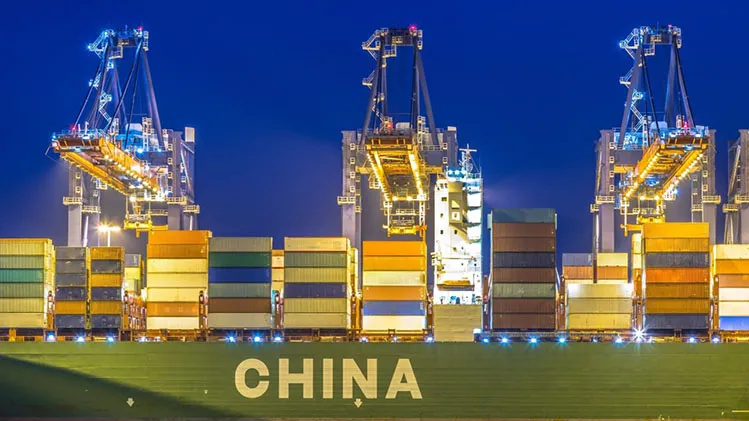In 2020 and 2021, the cost of shipping to China soared, causing many manufacturing companies to halt or scale back their operations. However, in 2024, there is good news for importers: the shipping to China cost has decreased. This decline started in January and is expected to continue through the peak seasons of 2024. Despite this, the prices are still higher than they were in 2019.
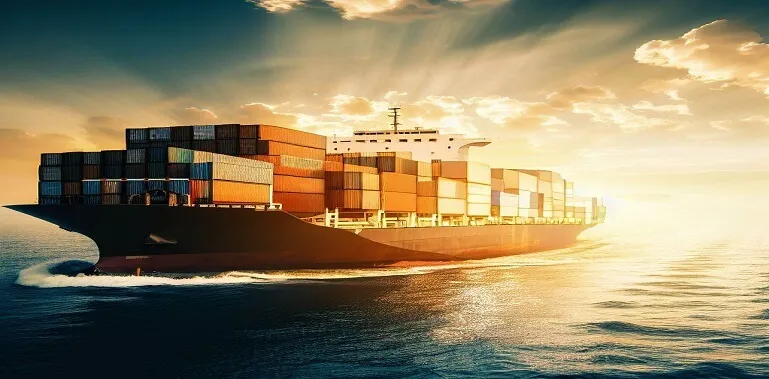
What is the Sea Freight Cost ?
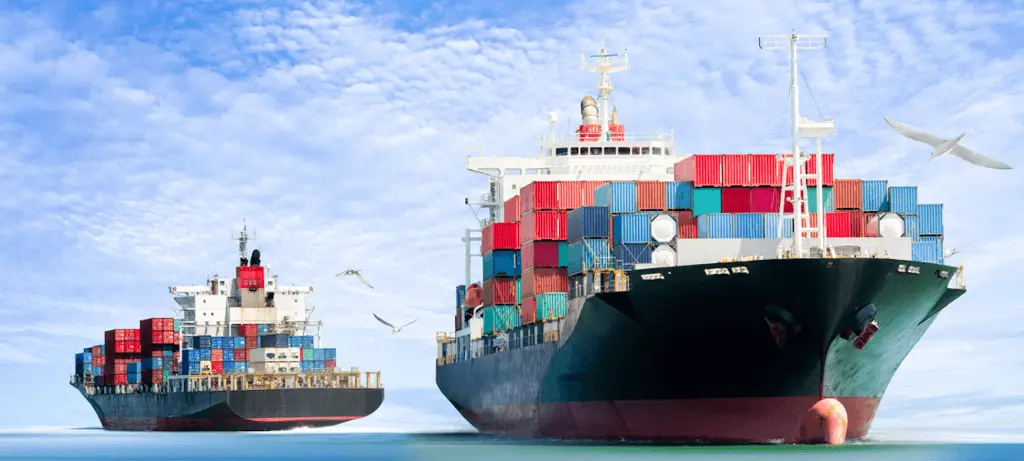
Factors affecting sea freight prices mode of shipping
Container Capacity:
Container capacity directly affects shipping costs, as it determines the amount of goods that can be transported at once. Full containers maximize space efficiency and reduce per-unit costs, whereas partially filled containers may incur higher costs. The choice between Full Container Load (FCL) and Less than Container Load (LCL) impacts both pricing and overall logistics strategy.
Distance Between the Port of Loading and Delivery Port:
The shipping cost is heavily influenced by the distance between the port of loading and the delivery port. Longer distances typically result in higher costs due to increased fuel consumption and labor expenses. Additionally, crossing multiple borders or regions with varying tariffs and regulations can further inflate shipping costs, impacting the overall logistics budget.
Nature and Size of Goods:
The nature and size of goods play a critical role in determining shipping costs. Bulky, oversized, or hazardous items often require special handling, packaging, and transport methods, which can increase costs. Fragile or perishable goods might need climate-controlled environments, further adding to the expense. Proper classification of goods ensures compliance and avoids unforeseen costs.
Oil Prices:
Fluctuations in oil prices significantly impact shipping costs, as fuel constitutes a major expense for transportation companies. When oil prices rise, shipping costs typically increase to cover the added expense. Conversely, when oil prices drop, there may be a reduction in shipping costs. This volatility requires companies to strategically plan and manage their shipping budgets effectively.
Seasons and Holidays:
Seasons and holidays affect shipping costs due to changes in supply and demand. During peak seasons, such as holidays or harvest times, increased demand for shipping services often leads to higher prices. Adverse weather conditions in certain seasons can also cause delays and disrupt shipping schedules, potentially increasing costs due to extended transit times or the need for expedited services.
Port Congestion:
Port congestion is a critical factor influencing shipping costs. When ports are overcrowded, ships face delays in docking, unloading, and reloading. This can lead to higher costs due to demurrage fees, longer wait times, and inefficiencies in the supply chain. Shippers may also incur additional charges for rerouting or utilizing alternative ports to avoid congested areas.
Local Cost of Ports:
The local cost of ports, including fees for docking, unloading, and customs clearance, can vary widely between locations. These costs are influenced by local regulations, labor rates, and port infrastructure. High port fees in certain regions can increase overall shipping costs, compelling shippers to carefully consider port selection to optimize costs and maintain supply chain efficiency.

Factors Influencing Shipping Costs to China
Shipping Method (Air, Sea, Land):
The shipping method you choose—air, sea, or land—affects cost, speed, and reliability. Air shipping is fast but expensive, suitable for urgent or small packages. Sea shipping is slower but cost-effective for large or heavy cargo. Land shipping is used for regional deliveries, balancing speed and cost. Each method serves different needs based on distance and budget.
Package Size and Weight:
The size and weight of a package significantly impact shipping costs. Larger and heavier packages are more expensive to ship due to the increased space and fuel required. Shippers often use dimensional weight pricing, considering both size and weight. Efficient packaging can help reduce costs by minimizing space and avoiding excess weight charges.
Shipping Distance and Route:
The distance and route of a shipment determine its cost and delivery time. Longer distances typically mean higher shipping costs due to increased fuel and labor. Complex routes that pass through multiple countries or regions can also add to costs due to varying tariffs, tolls, and customs regulations. Direct routes are usually faster and more economical.
Delivery Timeframes:
Delivery timeframes refer to how quickly a shipment needs to reach its destination. Faster delivery options, such as express or next-day shipping, are more expensive than standard options due to the premium placed on speed. Planning shipments ahead of time can help choose cost-effective delivery options, balancing urgency with budget constraints.
Customs Duties and Taxes:
Customs duties and taxes are fees imposed by a country on imported goods. These charges vary by country and depend on the type, value, and origin of the goods. Importers must factor these costs into their shipping budget, as they can significantly impact the total cost of shipping. Proper documentation and compliance are essential to avoid delays and additional fees.

Shipping Methods and Their Costs
Air Freight
Advantages: Air freight is the fastest method, ideal for urgent shipments. It offers reliability and frequent flights, reducing delivery times.
Cost Factors: Air freight is generally more expensive due to fuel costs and aircraft maintenance. Charges depend on weight, size, and distance.
Sea Freight
Advantages: Sea freight is cost-effective for large volumes and heavy cargo. It’s suitable for non-urgent shipments and offers high capacity.
Cost Factors: Sea freight costs are influenced by fuel prices, port fees, and container type. Longer transit times can also affect overall costs.
Express Couriers
Advantages: Express couriers provide fast and reliable delivery with tracking and guaranteed timeframes. Ideal for small, urgent packages.
Cost Factors: Express courier services are typically more expensive due to speed and additional services. Costs vary based on weight, size, and delivery speed.
Land Transport (For Neighboring Countries)
Advantages: Land transport is economical for shipping to nearby countries. It allows for flexible delivery schedules and direct routes.
Cost Factors: Costs are influenced by fuel, tolls, and border crossing fees. Vehicle maintenance and driver wages also affect the overall expense.
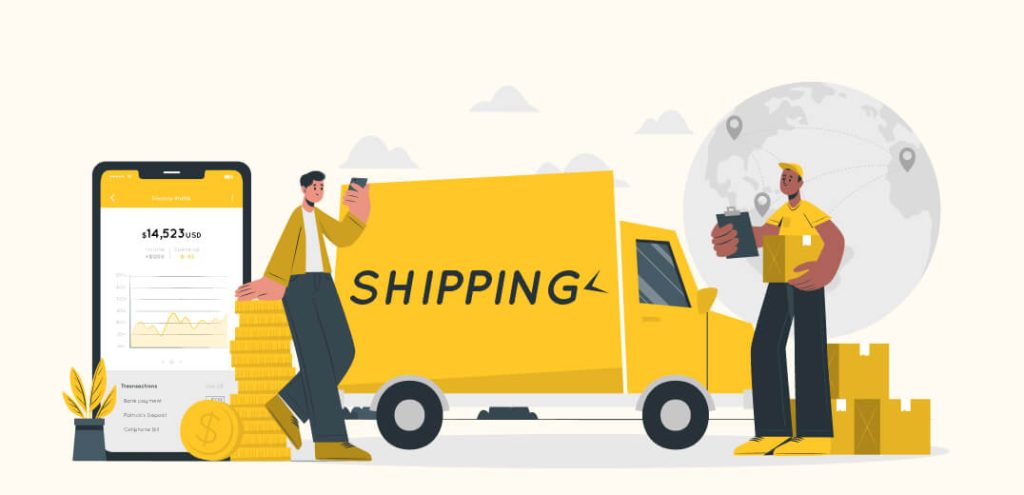
How to Calculate Shipping Costs
Calculating shipping costs involves several key factors that need to be considered to get an accurate estimate. Here’s a step-by-step guide to help you understand the process:
- Determine Package Details:
Measure the dimensions (length, width, height) and weight of your package. Shipping costs are often based on weight and size, so accurate measurements are crucial. - Choose the Shipping Method:
Decide whether you’re shipping by air, sea, land, or using an express courier. Each method has different cost structures based on speed, distance, and service level. - Calculate Distance and Route:
Identify the distance between the origin and destination. Longer distances generally increase shipping costs. Consider the route as well, as complex or less direct routes can add to the cost. - Check Shipping Rates:
Use a shipping rate calculator or consult with shipping carriers to get a base rate. Carriers often have online tools where you can input package details to get an estimate. - Include Additional Fees:
Factor in extra costs such as fuel surcharges, handling fees, and insurance. For international shipments, include customs duties, taxes, and brokerage fees. These can vary depending on the destination country and the nature of the goods. - Apply Discounts or Agreements:
If you have a business account or a shipping agreement with a carrier, apply any applicable discounts. Bulk shipping agreements or loyalty programs can also reduce costs. - Calculate Total Shipping Cost:
Combine the base shipping rate with additional fees and discounts to get the total cost. Ensure that all potential charges are considered to avoid unexpected expenses. - Review and Adjust:
Double-check all calculations and compare different carriers or shipping methods to find the most cost-effective option. Adjust your choices based on budget and delivery requirements.
By following these steps, you can accurately estimate shipping costs and make informed decisions based on your specific needs and circumstances.
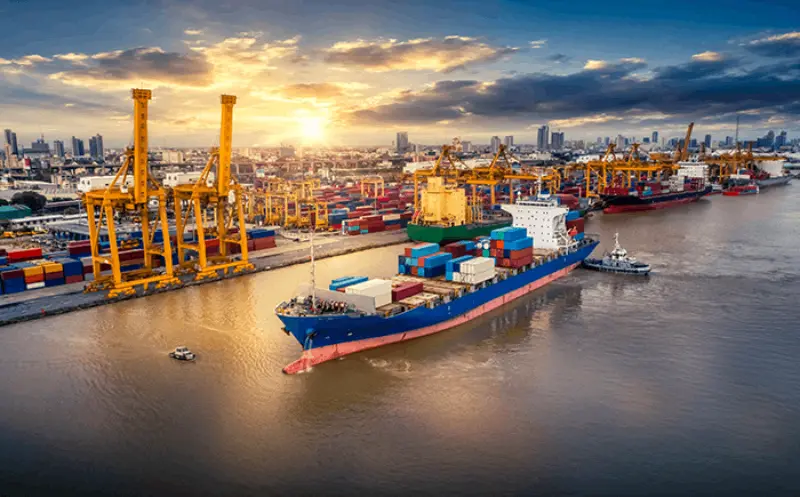
Shipping Companies and Their Rates
- FedEx
FedEx offers fast, reliable shipping with extensive global reach. Known for its express services, FedEx provides options for overnight delivery and tracking. Rates are competitive for urgent shipments but can be higher compared to slower methods. - UPS
UPS is renowned for its robust logistics network and reliable delivery services. It offers various shipping options, including ground, air, and international services. UPS rates are generally affordable, especially for bulk shipments, and it provides comprehensive tracking and delivery options. - DHL
DHL specializes in international shipping with a strong global presence. It’s known for fast delivery times and excellent tracking services. DHL rates can be higher for express international shipments but offer reliable, timely service and a range of delivery solutions. - Maersk
Maersk is a leading ocean freight carrier, ideal for large shipments and global trade. It offers extensive sea transport services and reliable schedules. While Maersk is cost-effective for bulk and long-distance shipments, it’s less suited for urgent deliveries compared to air freight options. - Comparison of Rates and Services
FedEx and DHL excel in fast, international express services, but can be costly. UPS offers competitive rates for both domestic and international shipments with strong logistics support. Maersk is ideal for bulk sea freight, providing cost-effective solutions for large shipments but slower transit times.

Tips for Reducing Shipping Costs
- Choosing the Right Shipping Method:
Selecting the right shipping method depends on your needs for speed, cost, and destination. Air freight is ideal for urgent deliveries and small packages but can be expensive. Sea freight is cost-effective for large or heavy cargo but slower. Land transport is suitable for regional shipments, offering a balance of cost and speed. Consider each method’s advantages and match them to your shipping requirements. - Optimizing Package Size and Weight:
To reduce shipping costs, optimize your package size and weight. Use the smallest, most efficient packaging that fits your product to minimize dimensional weight charges. Choose lightweight materials without compromising protection. Properly packed items can avoid additional fees for excess weight or size, leading to cost savings. Efficient packaging also helps in maximizing space and reducing overall shipping expenses. - Utilizing Consolidation Services:
Consolidation services involve grouping multiple shipments into one larger shipment to reduce costs. This method is particularly useful for international shipping, where consolidating goods can lead to significant savings on freight. By sharing space with other shipments, you benefit from lower rates and reduced handling fees. Consolidation also simplifies logistics and can speed up delivery times by optimizing transportation routes. - Leveraging Volume Discounts:
Volume discounts are offered by shipping carriers for large or frequent shipments. By negotiating rates based on your shipping volume, you can achieve lower costs per shipment. This is particularly beneficial for businesses with consistent shipping needs. Leverage your shipping volume to negotiate better terms with carriers, or use a third-party logistics provider to access discounted rates based on their larger shipping volumes.

Common Mistakes to Avoid
- Misestimating Package Dimensions:
Accurately measuring package dimensions is crucial to avoid unexpected costs. Misestimating size can lead to higher shipping fees due to dimensional weight charges or require costly adjustments. Always use precise measurements and consider packaging materials in your calculations. Double-check your dimensions before shipping to ensure you’re not paying more than necessary or risking delays due to incorrect size information. - Ignoring Customs Regulations:
Ignoring customs regulations can result in delays, fines, or even the seizure of goods. Each country has specific rules regarding documentation, duties, and prohibited items. Ensure you understand and comply with the customs requirements of both the origin and destination countries. Properly completing paperwork, paying necessary duties, and adhering to import/export regulations will prevent complications and ensure smooth delivery. - Choosing Inappropriate Shipping Methods:
Selecting the wrong shipping method can lead to higher costs or delayed deliveries. For example, using air freight for non-urgent, bulky items can be unnecessarily expensive, while sea freight for urgent, small packages may result in missed deadlines. Evaluate your needs for speed, cost, and shipment size carefully. Match your choice of shipping method to your delivery requirements to optimize efficiency and expenses.
Ocean Freight Rates Historical Charts for 2024
Will Freight Cost Increase in 2024?
Freight rates are always fluctuating due to the unstable shipping market. Currently, there is a significant drop in the shipping cost from China, making it an ideal time to import goods. Experts suggest that shipping to China costs could decrease further by 30% to 40%. However, these rates are likely to rise again during the peak shipping season from August to October 2024, or if there is a surge in demand for goods or container shortages.

Container Shipping Cost from China to the USA in 2024
In 2024, the cost of shipping from China to the US varies based on several factors. For a 20-foot container, the typical cost ranges from $2,000 to $5,000, while a 40-foot container generally costs between $4,000 and $8,000. Full Container Load (FCL) shipments tend to be more cost-effective for larger volumes compared to Less than Container Load (LCL), which is priced around $300 to $500 per cubic meter (CBM).
The cost of shipping from China to the US is influenced by the route, with major ports like Shanghai to Los Angeles often being more economical. Additional costs include port fees, customs duties, insurance, and inland transportation. Seasonal demand can also affect rates, with higher costs during peak periods such as summer and major holidays.
For faster delivery, air freight from China to the US is an alternative, though it is significantly more expensive than ocean freight. To secure the best rates, it’s advisable to obtain quotes from various freight forwarders and shipping companies based on your specific shipping needs.
To summarize, if you’re asking, “How much does it cost to ship a container from China to the USA?” the average costs are as follows, with variations based on the exact shipping details.
Cost Of Shipping Container From CHINA to US
NUMBER | PORT OF LOADING | PORT OF DELIVERY | COST($) |
1 | SHANGHAI | LOS ANGELES | 7500$ |
2 | SHENZHEN | SHENZHEN | 8000$ |
3 | GUANGZHOU | SAVANNAH | 9800$ |
4 | TIANJIN | HOUSTON | 10500$ |
5 | NINGBO | PORT NORFOLK | 1100$ |
How Much Does It Cost To Bring a 40Foot Container From CHINA?
The table below shows the current shipping prices from China to the USA for a 40ft container.
NUMBER | PORT OF LOADING | PORT OF DELIVERY | COST($) |
1 | SHANGHAI | OAKLAND | 8500$ |
2 | SHENZHEN | NEW YORK | 9500$ |
3 | GUANGZHOU | BALTIMORE | 10200$ |
4 | TIANJIN | NEWARK | 10800$ |
5 | NINGBO | PORTLAND | 9500$ |
cheapest shipping to china from usa
The cheapest shipping option from the USA to China is typically sea freight, especially for large or heavy shipments, despite its slower transit time of 20-30 days. For smaller shipments, consider consolidation services that combine multiple shipments into one, reducing costs. Economy air freight offers a faster alternative to sea freight at a lower cost than express options. Using freight forwarders or shipping aggregators can help secure discounted rates by comparing options and negotiating deals. Regularly check for carrier promotions to find the best rates.

Container Shipping Cost from China to Canada in 2024
Canada’s trade with China is significant, involving major imports like electrical equipment, machinery, and apparel. Importers have various shipping options, including air freight, air express, and ocean freight. Shipping from China to Canada , particularly by ocean freight, is cost-effective for heavy goods but takes 20 to 30 days for delivery. Shipping costs vary based on service type and container size. For detailed information on the top 10 biggest ports in Canada in 2024 , , please refer to our comprehensive article.
Factors affecting container shipping costs from China to Canada
When shipping containers from China to Canada, several factors influence the overall costs. Here’s a detailed look at these factors:
- Service Type:
Costs vary depending on whether the service is door-to-door or port-to-port. Door-to-door services, which handle the entire shipping process, typically cost more, ranging from $2.25 to $2.6 per kilogram. Port-to-port services may be cheaper but require more coordination on the importer’s part. - Container Size:
The size of the container significantly affects the cost. Shipping a 20ft container is generally less expensive than a 40ft container, despite the latter’s higher capacity. The larger volume of a 40ft container does not always scale proportionally in cost, making the 20ft option more economical for smaller loads. - Full Container Load (FCL) vs. Less than Container Load (LCL):
FCL shipments, where an entire container is used exclusively for one shipper, tend to be cheaper per cubic meter compared to LCL, where multiple shippers share a container. For example, LCL shipping from Shanghai averages $679 per CBM, whereas FCL can offer lower rates due to reduced handling and shared costs. - Distance and Route:
The distance between the port of loading in China and the destination port in Canada impacts shipping rates. Longer routes can incur higher costs due to increased fuel consumption and longer transit times. Efficient routing and port selection can help manage these costs. - Cargo Type and Handling:
The nature of the cargo, including its weight, size, and whether it requires special handling, affects shipping costs. Heavy, oversized, or hazardous goods often incur higher fees due to additional handling and safety requirements. - Fuel Prices:
Fluctuations in fuel prices directly impact shipping costs. Higher fuel prices can lead to increased freight rates as carriers adjust their charges to cover fuel expenses. - Seasonality and Demand:
Shipping costs can rise during peak seasons due to increased demand for cargo space and higher volumes of goods. For example, during busy times like the holiday season, rates may be elevated. - Port Fees and Customs Duties:
Costs associated with port fees and customs duties at both the departure and arrival ports affect the total shipping expense. These fees can vary depending on the port and the regulations in place.
By understanding and considering these factors, importers can better manage and optimize their shipping costs from China to Canada.
40 Foot Container Shipping Cost From Chaina To Canada
Shipping a 40-foot container from China to Canada generally costs between $4,000 to $8,000 for Full Container Load (FCL). Prices vary based on factors like the specific ports in China and Canada, market demand, and fuel prices. For Less than Container Load (LCL), costs are approximately $300 to $600 per cubic meter (CBM), depending on the volume shipped. Additional charges may include port fees, customs clearance, insurance, and inland transportation. For precise and current pricing, it’s best to contact a freight forwarder directly.
20 Foot Container Shipping Cost From Chaina To Canada
Shipping a 20-foot container from China to Canada typically costs $2,500 to $6,000 for Full Container Load (FCL). Prices vary based on the ports involved and market conditions. For Less than Container Load (LCL), costs are about $300 to $600 per cubic meter (CBM). Additional expenses include port fees, customs clearance, insurance, and inland transportation. Rates fluctuate, so contacting a freight forwarder for an accurate, up-to-date quote is recommended.
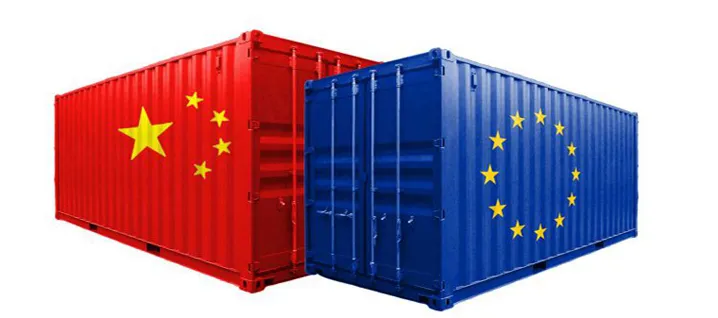
Container Shipping Cost from China to Europe in 2024
In 2024, Shipping from China to Europe involves various factors that impact container shipping costs. The container size plays a significant role, with 20ft containers being cheaper than 40ft ones. Full Container Load (FCL) shipments are generally more cost-effective for larger volumes compared to Less than Container Load (LCL), which is priced per cubic meter (CBM).
The chosen shipping route and distance directly influence costs, with longer and more complex routes being more expensive. Service type also affects pricing; door-to-door services are costlier than port-to-port options, as they cover all logistics aspects.
Cargo characteristics, including weight, size, and special handling requirements, can lead to additional charges. Fuel price fluctuations can impact freight rates, as higher fuel costs usually result in increased shipping expenses.
Seasonal demand plays a role, with peak periods like summer and major holidays driving up costs. Additionally, port fees and customs duties at both the origin and destination ports contribute to the overall cost.
For Air Freight from China to Europe , costs are generally higher but offer faster delivery times. In general, shipping a 40ft container from China to Europe ranges from $7,000 to $12,000, while LCL shipments typically cost $300 to $600 per CBM. Getting quotes from various carriers can help secure the best rates.
40 Foot Container Shipping Cost From Chaina To Europe
Shipping a 40-foot container from China to Europe typically costs between $5,000 to $9,000 for Full Container Load (FCL). The price can vary based on the specific ports in China and Europe, market conditions, and fuel prices. For Less than Container Load (LCL), costs range from $300 to $600 per cubic meter (CBM), depending on the volume shipped. Additional expenses may include port fees, customs clearance, insurance, and inland transportation. For the most accurate and up-to-date pricing, contacting a freight forwarder is recommended.
20 Foot Container Shipping Cost From Chaina To Europe
Shipping a 20-foot container from China to Europe typically costs between $3,000 to $6,000 for Full Container Load (FCL). The exact cost depends on the ports involved, market conditions, and fuel prices. For Less than Container Load (LCL), costs range from $300 to $600 per cubic meter (CBM). Additional charges may include port fees, customs clearance, insurance, and inland transportation. To get the most accurate and up-to-date pricing, it’s best to contact a freight forwarder directly.
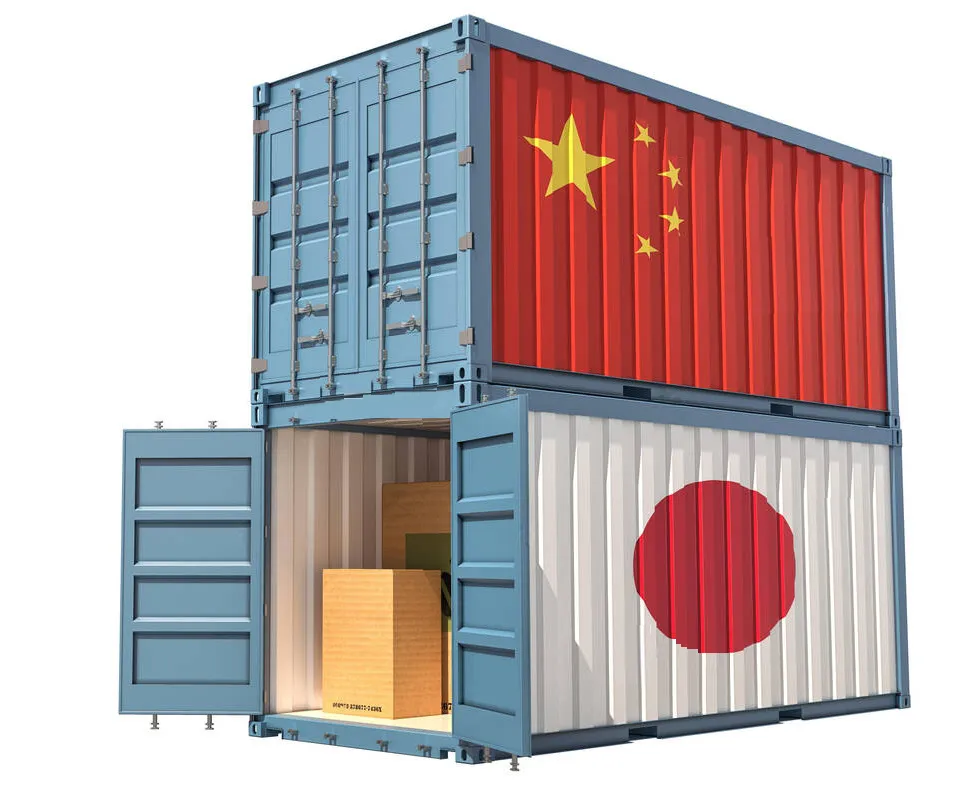
Container Shipping Cost from China to Japan in 2024
Japan, as the world’s third-largest economy, maintains strong economic ties with China due to their geographic proximity. Shipping from China to Japan is both efficient and swift, facilitating the movement of various goods.
Japan imports a diverse range of products from China, including electronics, machinery, apparel, plastics, furniture, optical devices, toys, vehicles, and chemicals.
For cost-effectiveness and handling heavy goods, importers in Japan frequently choose ocean freight, despite its slower delivery compared to other methods. Alternatives for shipping from China to Japan include air express and air freight, which offer faster transit times.
The cost of ocean freight varies based on factors such as distance, cargo dimensions, container type, and chosen incoterms. Common incoterms for shipments from China to Japan are FOB (Free on Board) and CIF (Cost, Insurance, and Freight).
Under FOB terms, the supplier’s responsibility extends only until the goods are loaded onto the transport. Conversely, CIF terms require the supplier to cover costs and risks until the goods reach the destination port.
40 Foot Container Shipping Cost From Chaina To Japan
Shipping a 40-foot container from China to Japan typically costs between $1,500 to $3,000 for Full Container Load (FCL). The price varies based on factors such as the specific ports used in China and Japan, market demand, and fuel prices. For Less than Container Load (LCL), costs can range from $200 to $400 per cubic meter (CBM), depending on the volume shipped. Additional costs might include port fees, customs clearance, insurance, and inland transportation. For precise and current rates, it’s advisable to contact a freight forwarder directly.
20 Foot Container Shipping Cost From Chaina To Japan
Shipping a 20-foot container from China to Japan generally costs between **$1,000 to $2,500** for Full Container Load (FCL). The exact price depends on factors like the specific ports used, current market conditions, and fuel prices. For Less than Container Load (LCL), costs are typically around **$200 to $400 per cubic meter (CBM)**. Additional expenses may include port fees, customs clearance, insurance, and inland transportation. To get the most accurate and up-to-date pricing, contacting a freight forwarder is recommended.
How to get the best container shipping rates from China to Japan
To get the best rates when shipping goods from China to Japan:
- Ensure you use good packaging materials that will not increase the volume of your goods
- Consult various carriers before shipping
- Get a reputable freight forwarder to work with you
- Consider consolidating your goods
Container transit time from China to Japan usually ranges from 5 to 21 days. This is actually slow since Japan is close to China. The reason for this is that ships are generally slower, especially when they are carrying very heavy goods.
Conclusion
In conclusion, effectively managing shipping costs and choosing the right shipping method requires careful consideration of various factors. Accurately estimating package dimensions, understanding and complying with customs regulations, and selecting the most appropriate shipping method based on your needs are all crucial steps. By avoiding common mistakes, utilizing consolidation services, optimizing package size, and leveraging volume discounts, you can enhance cost-efficiency and streamline your shipping process. Thoughtful planning and strategic choices will lead to smoother, more economical shipping experiences and improved logistics outcomes.
China’s Shipping Cost FAQ's
The average sea freight cost for shipping goods from China to the USA ranges from $2 to $4 per kilogram. Shipping a 20ft container costs $277, while a 40ft container costs $377.
Shipping prices have decreased due to lower demand and reduced sales of goods, primarily caused by ongoing lockdowns and closed companies. Additionally, high fuel prices and ample inventories have contributed to the decline in prices.
Freight rates are expected to continue dropping by 30% to 40%, but they may increase during the peak seasons of 2024, from August to October. Rates can also rise with increased demand or container shortages.
The cost of shipping a 20ft container to the West Coast of the USA is around $8,500, while shipping to the East Coast is approximately $10,500. For a 40ft container, the cost is around $15,000 to the West Coast and $18,000 to the East Coast.
Container shipping costs from China to Canada vary depending on factors such as service type (door-to-door or port-to-port) and shipment weight and volume. On average, shipping a 40ft container from Shanghai, Guangzhou, or Qingdao to Toronto costs around $6,900.
Container shipping prices from China to Europe depend on factors like shipping mode (FCL or LCL), distance, weight, and cargo type. As an example, shipping from Shanghai to Southampton costs around $1,141.
The cost of shipping a 20ft container from China to Japan using FOB incoterms is approximately $200. For LCL, the freight cost is around $60 per cubic meter (167 kg), while FCL rates are about $200 for a 20ft container and $300 for a 40ft container.
Shipping prices are expected to stabilize around mid-2023. Factors such as increased container and vessel capacity, government actions, and reduced demand may contribute to subsequent price reductions, although fluctuations are still possible due to market volatility.
Your rating for this article
